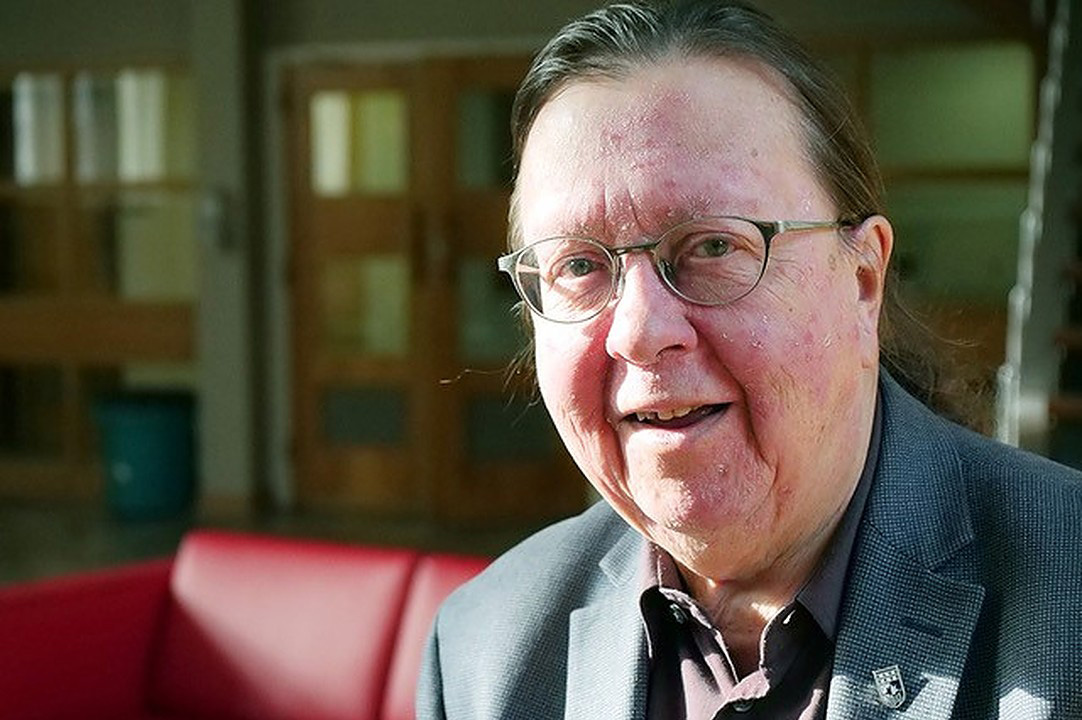
USask researcher helping design improved mask for pre-symptomatic COVID-19 patients
A University of Saskatchewan (USask) researcher is helping design personal protective masks for pre-symptomatic COVID-19 patients.
By Kristen McEwen“One of the most prominent and fearsome symptoms of COVID-19, is the fact that its transmission seems to precede any actual symptoms of a fever or respiratory condition,” said Community Health and Epidemiology professor Dr. Malcolm King (PhD).
One of the ways to prevent early spread of the disease is to create a mask for individuals who know that they have been in contact with someone else who has the disease, but before they start exhibiting symptoms.
“Most people don’t get tested until they become symptomatic, or are at high risk,” King said. “There is a need for a mask that would protect the people around them — families, friends, people who are at risk, older adults,” King said.
King is acting as a long-distance consultant to team up with Dr. Gustavo Zayas (MD), a colleague based in Edmonton, Alta., and Alan Britten, an engineer based in London, England, to create a mask that will reduce early transmission of the disease. Britten is working on a prototype that he will be demonstrating in the near future.
As masks are used, talking and coughing causes pressure to build up in the mask and cause leakage through the mask. A more complex mask is needed, one that would allow for a “buffering” area as air leaves the lungs but before the droplets enter the air.
“You need some special features that would allow for basically buffering of the cough so that the air released by the cough wouldn’t go into the atmosphere but taken up into the buffering area,” he said.
Turning knowledge into practice
King’s consultation role in this design is slightly different from his current work as scientific director of the Saskatchewan Centre for Patient Oriented Research (SCPOR) based at USask. But it is a return to the research he was part of eight years ago.
At that time, King was a laboratory scientist at the University of Alberta where he and his colleagues had been extensively investigating the transmission of airborne diseases through coughing and other secretions from the respiratory tract since shortly after the SARS epidemic in 2003.
King and his team studied the characteristics aerosol produced by healthy participants when they coughed and published their findings in articles published in 2012 shortly after the outbreak of the H1N1 virus.
“A person who doesn’t have lung disease, who’s not producing obvious mucous or secretions because you’re still producing aerosol – it’s invisible,” King said. “You even produce it when you talk.”
Though King is no longer working in the lab, he continues to mobilize previous knowledge — from studies he conducted during previous epidemics like SARS and H1N1 — to design and improvise devices that will protect healthcare workers and prevent the spread of the disease.
Recently, an emergency medicine team in Edmonton reached out to King for advice on additional personal protective measures they could use when intubating patients. He recommended using a glove box — a Plexiglas box with gloves that reach through the side — commonly used in labs.
“We were utilizing the knowledge about what droplet sizes are like, and the properties of droplets that are generated during coughing — a device like a glove box would make sure the particles are taken out and landing on a surface, instead of floating in the atmosphere,” King said.
A research group in Boston, Mass. has published an article in the New England Journal of Medicine, separately concluded that a glovebox would be a solution to prevent the spread of COVID-19.
King said that knowledge gained during previous and current experiences with viruses and epidemics must be used to prepare for the next one.
“Let’s face it, this is not likely to be the last pandemic that ever comes along,” King said. “Once we get through COVID-19, there will inevitably be another one coming. Once this goes away, we cannot stop development and knowledge development. We have to learn from COVID-19 and apply knowledge.”
“The same principles and ideas can be applied to any future virus like COVID-19.”
